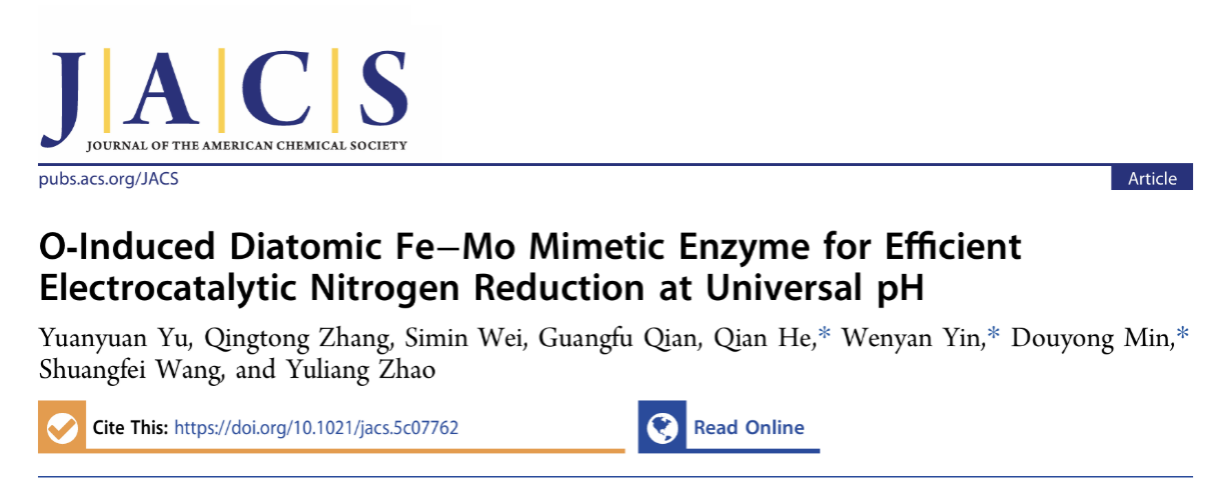Recently, Professor Min Douyong's research team from Academician Wang Shuangfei's group at Guangxi University's School of Light Industry and Food Engineering has made new progress in electrocatalytic nitrogen reduction using lignocellulosic functional materials. The related findings, entitled "O-Induced Diatomic Fe–Mo Mimetic Enzyme for Efficient Electrocatalytic Nitrogen Reduction at Universal pH," have been published in the Journal of the American Chemical Society. The paper's first author is Yuyuan Yuan, a 2022 doctoral student at the School, with co-corresponding authors including Professor Min Douyong, Associate Professor He Qian, and Researcher Yin Wenyan from the Institute of High Energy Physics, Chinese Academy of Sciences. Guangxi University is the first corresponding affiliation. This publication marks the School's first paper in JACS as the first corresponding affiliation and represents a major breakthrough for the Light Industry Technology and Engineering discipline in publishing high-impact research internationally.
Electrocatalytic nitrogen reduction reaction (ENRR) offers a promising pathway for green ammonia synthesis, yet remains constrained by low catalytic activity and selectivity. Although single-atom catalysts (SACs) have advanced in mimicking enzyme active centers, they face limitations such as monotonous active sites and restricted electronic structure modulation. Dual-atom catalysts (DACs), leveraging bimetallic synergy and tunable coordination environments, can break linear scaling relationships and achieve highly efficient catalysis.

Natural nitrogenases rely on metal active sites for efficient N₂ activation, but their oxygen sensitivity and demanding operational conditions limit engineering applications. Inspired by the nitrogen fixation mechanism of rhizobia in plant roots, the team utilized oxygen-induced atomic confinement effects in carbonized wood to precisely regulate the local microenvironment of Fe–Mo dual-atom sites. This approach mimicked both the metal active center and auxiliary building units of nitrogenase, resulting in a dual-atom catalyst demonstrating high NH₃ production rates across a wide pH range. The catalyst integrates a biomass-derived 3D porous framework, a nitrogenase-like active site configuration, and exceptional electron transfer/reactant diffusion capabilities, showcasing a profound integration of bioinspired strategies and lignocellulosic functional material design in artificial nitrogen fixation.
This research was supported by funding from the National Natural Science Foundation of China, the Department of Science and Technology of Guangxi Zhuang Autonomous Region, and Guangxi University, with additional support from platforms such as the Guangxi Key Laboratory of Clean Pulping and Papermaking & Pollution Control.